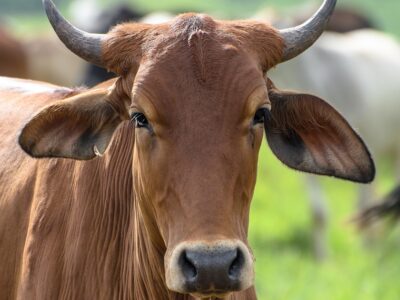Below you can find a complete list of Timorese animals. We currently track 201 animals in Timor-Leste and are adding more every day!
The island nation of Timor-Leste, sometimes anglicized as East Timor, comprises half of the island of Timor in the Indonesian archipelago. Unlike the other half of the island, it is not a part of the Republic of Indonesia but is instead an independent country that was formerly a Portuguese colony to one degree or another for nearly 500 years.
Timor-Leste is a mountainous country whose chief exports are coffee and sandalwood, along with the revenues accrued from offshore oil and gas leases. Despite this windfall, the country remains relatively under-developed. Recent efforts have been focused on capitalizing upon the country’s treasure chest of unspoiled tropical landscapes and offshore marine sanctuaries.
The Official National Animal Of Timor-Leste
The official national animal of Timor-Leste is the powerful and fearsome Crocodile. While this may seem to be an odd choice for a national animal, it was selected because local legend holds that the very island of Timor itself was formed out of a giant crocodile. In fact, if one looks at a map of the island, it appears very much as if it were the head of a crocodile with its closed jaws facing to the east.
Where To Find The Top Wild Animals In Timor-Leste
As an underdeveloped tropical island nation, Timor-Leste abounds in wildlife almost everywhere. There are, of course, numerous places specially designed to display the nation’s wildlife endowment to the best effect. Significantly, the country has decided to focus its efforts on the encouragement of marine eco-tourism where it has a significant advantage over practically every other place on earth. While many species of mammals are also worth viewing, it is these marine animals which the nation is concentrating its efforts upon.
As a result, many of the best places to view wildlife in Timor-Leste are on the coasts and contain wide margins of the littoral seas surrounding it. The Ombai-Wetar Strait Hope Spot is a unique UN-recognized zone where viewing of marine life is highly encouraged.
Two other excellent places to view the island’s unique heritage are Atauro Island, which is being developed by a public-private partnership into a new National Park and the country’s first national park, Nino Konis Santana National Park. The latter is a very large area encompassing more than 300,000 acres of shoreline, tropical rainforest, mountainous terrain, and the island’s last surviving dry forest, which is home to a large percentage of the island’s unique bird species as well as a host of local mammals.
The Most Dangerous Animals In Timor-Leste
Since the nation uses the crocodile as its national animal, it is reasonably likely that this represents a major threat in terms of dangerous wildlife species on the island. The other most dangerous ones would include large Monitor Lizards and the Reticulated Cobra.
Endangered Animals In Timor-Leste
Because of its very unique location on the planet, Timor has a large number of near crossover species drawn from nearby Australia as well as Asia, of which Timor is virtually the last stop on the continent and the only large landmass of the continent that is below the equator.
This also means that these animal groups are in short supply even as a normal condition. Among its bat species, both the Large Flying Fox and the Sunda Flying Fox are listed as endangered species. Offshore, the Dugong, which is a relative of the Manatee, is considered to be at risk. The local edition of the one-horned rhinoceros known as the Badak Jawa is another species that is endangered.
Among the 250 local bird species, the Timor Imperial Pigeon, the Iris Lorikeet, and the Timor Sparrow are all on the list of avians worthy of concern about going extinct.
While no species of note has gone extinct recently, the island was once home to several species of very large lizards akin to the Komodo Dragon of today. These were all rendered extinct in prehistoric times.
Timorese Animals

Admiral Butterfly
Stunningly beautiful wings

Ant
First evolved 100 million years ago!

Antelope
Renew their horns every year!

Armyworm
They are so named because they "march" in armies of worms from one crop to another in search of food

Aurochs
Extinct ancestor of all domesticated cattle!

Banana Spider
People spin clothing and fishing nets out of these spiders’ silk.

Barb
There are over 1768 known species!

Barn Owl
Found everywhere around the world!

Bat
Detects prey using echolocation!

Bear
There are 8 different species!

Bed Bugs
Bed bugs feed for 4-12 minutes.

Bee
Rock paintings of bees date back 15,000 years

Beetle
There are more than 350,000 different species

Bird
Not all birds are able to fly!

Biscuit Beetle
The biscuit beetle form a symbiotic relationship with yeast

Black Widow Spider
They typically prey on insects!

Brazilian Treehopper
“Mild-Mannered Minimonsters”

Brown Dog Tick
Can live its entire life indoors

Bumblebee
The most common species of bee!

Butterfly
There are thought to be up 17,500 species!

Camel Cricket
The camel crickets that are found in the USA are light brown in color. They also have dark streaks all over their body.

Cat
May have been domesticated up to 10,000 years ago.

Caterpillar
The larvae of a moth or butterfly!

Catfish
There are nearly 3,000 different species!

Centipede
There are about 3,000 documented species!

Chicken
First domesticated more than 10,000 years ago!

Cockroach
Dated to be around 300 million years old!
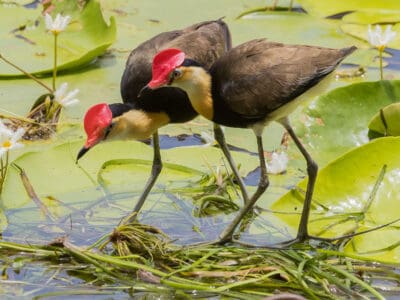
Comb-crested Jacana
They are busy foragers, always on the move

Common Buzzard
The most common raptor in the UK!

Common Furniture Beetle
The common furniture beetle feeds exclusively on wood

Common House Spider
House spiders have the ability to eat most insects in a home.
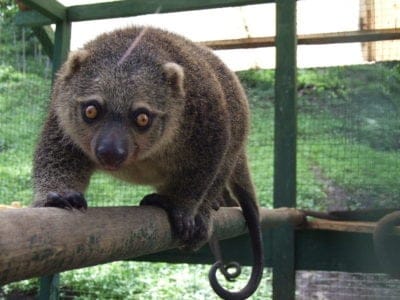
Common Spotted Cuscus
Has a long, strong prehensile tail!

Cormorant
They can fly 35 mph and dive 150 feet below water.

Cow
There are nearly 1.5 billion worldwide!

Cow Reticulated Python
Cow reticulated pythons hatch solid white, then develop spots as they mature.

Crab
There are 93 different crab groups

Crab Spider
Crab Spiders can mimic ants or bird droppings

Crane
Many are critically endangered species!

Cricket
Male crickets can produce sounds by rubbing their wings together

Crocodile
Have changed little in 200 million years!

Crocodylomorph
Crocodylomorphs include extinct ancient species as well as 26 living species today.

Deer
There are around 40 different species!

Dog
First domesticated in South-East Asia!

Dog Tick
Dog ticks feed on dogs and other mammals

Donkey
First domesticated 5,000 years ago!

Dragonfly
It's larvae are carnivorous!

Duck
Rows of tiny plates line their teeth!

Dung Beetle
The dung beetle can push objects many times its own weight

Eagle
Has exceptional eyesight!

Earthworm
They are hermaphrodites, which means they have male and female organs

Earwig
There are nearly 2,000 different species!

Eel
Eels can be a mere few inches long to 13 feet!

Elephant
Spends around 22 hours a day eating!

Falcon
The fastest creatures on the planet!

False Widow Spider
False spiders actually prey on black widow spiders and other hazardous spiders
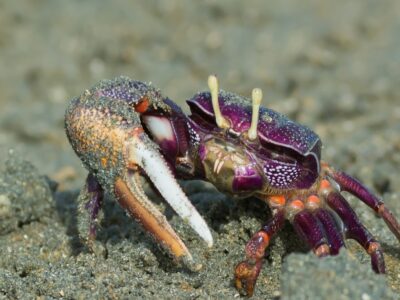
Fiddler Crab
The fiddler crab gets its name from the motion the males make with their over-sized claw during the mating ritual.
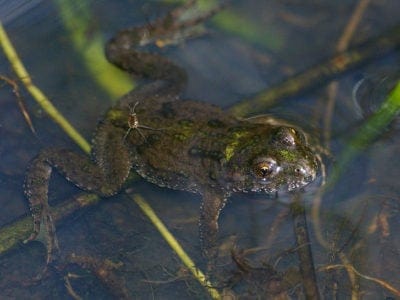
Fire-Bellied Toad
Found across mainland Europe and Asia!

Firefly
The firefly produces some of the most efficient light in the world

Flea
Adult fleas can jump up to 7 inches in the air

Fly
There are more than 240,000 different species!

Flying Squirrel
Can glide up to 90 meters!

Fox
Only 12 species are considered "true foxes"

Frog
There are around 7,000 different species!

Fruit Fly
Fruit flies are among the most common research animals in the world

Gazelle
Named for the Arabic word for love poems

Gecko
There are thought to be over 2,000 species!

Gerbil
Originally known as the Desert Rat!

Giant Trevally
The largest fish in its genus

Glass Lizard
Can grow up to 4ft long!

Glowworm
Found inhabiting dense woodland and caves!

Gnat
Males form large mating swarms at dusk

Goat
Most closely related to the Sheep!

Golden Oriole
Migrates between Europe and Asia!

Goose
There are 29 different species!

Grasshopper
There are 11,000 known species!

Green Bee-Eater
Mainly eats honeybees!
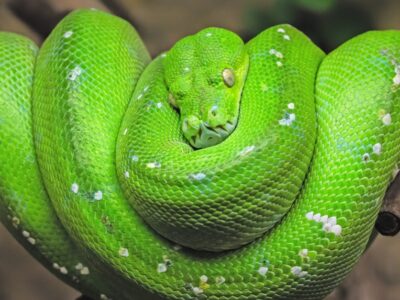
Green Tree Python
Green tree pythons are non-venomous, so to subdue their prey, they have a couple of very unique and highly successful hunting techniques.

Hamster
Able to run as quickly backwards as forwards!

Hare
Can reach speeds of over 50 mph!

Hawk Moth Caterpillar
Many hawk moth caterpillars eat toxins from plants, but don’t sequester them the way milkweed butterflies do. Most toxins are excreted.

Hedgehog
Thought to be one of the oldest mammals on Earth!

Heron
Inhabits wetlands around the world!

Honey Bee
There are only 8 recognized species!

Hoopoe
Stunning bird with a stinky way to deter predators!

Horse
Has evolved over 50 million years!

Horsefly
Horseflies have been seen performing Immelmann turns, much like fighter jets.

Housefly
The fly has no teeth

Human
Thought to have orignated 200,000 years ago!

Ibis
Found in swamps, marshes and wetlands!

Insects
There are an estimated 30 million species!
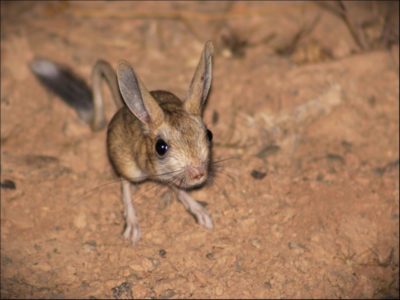
Jerboa
Tiny rodent with a kangaroo-like jump!

Jumping Spider
Some can jump 50 times the length of their bodies
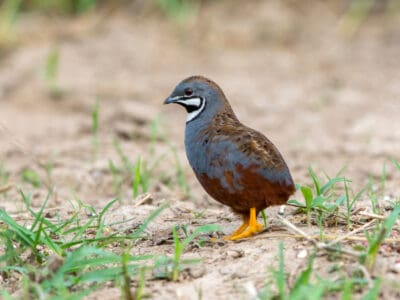
King Quail
Females look similar to males but don’t come in shades of blue

Kingfisher
Inhabits wetlands and woodlands worldwide!

Ladybug
There are more than 5,000 species worldwide!

Leech
Has 10 pairs of eyes!

Leopard Cat
There are 11 different species!

Liger
The offspring of a lion and tiger parents!

Lizard
There are around 5,000 different species!

Locust
Each locust can eat its weight in plants each day.

Long-Eared Owl
Ear tufts make it look bigger!
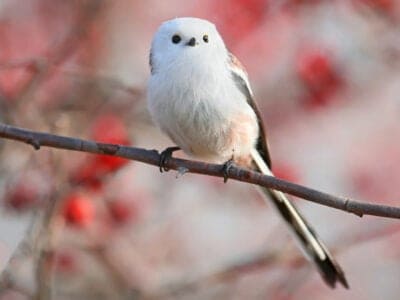
Long-Tailed Tit
Often hangs upside down while feeding!
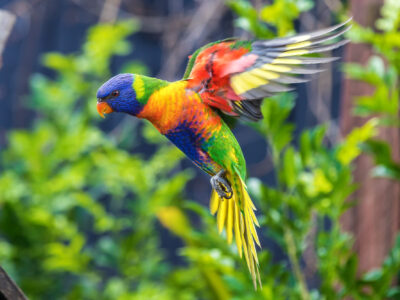
Lorikeet
The lorikeet has a long brush-like tongue with fine hairs on it

Magpie
They are found across Europe, Asia and Africa!

Masked Palm Civet
Found throughout Asia, India and China!

Mayfly
There are 2,500 known species worldwide!

Mealybug
They have a symbiotic relationship with ants.

Millipede
Some species have a poisonous bite!

Mole
Primarily hunts and feeds on Earthworms!
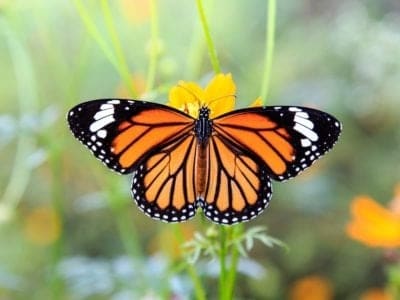
Monarch Butterfly
During migration, Monarch Butterflies may travel 250 or more miles each day.
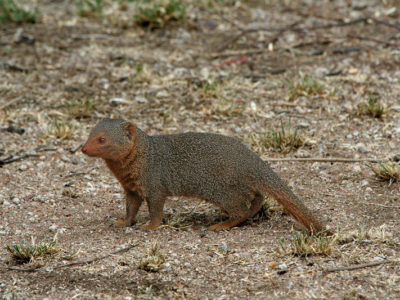
Mongoose
Range in size from just 1 to 3 foot!

Mongrel
Has characteristics of two or more breeds!

Monitor Lizard
Some species are thought to carry a weak venom!

Monkey
There are around 260 known species!

Moorhen
Feeds on aquatic insects and water-spiders!

Mosquito
Only the female mosquito actually sucks blood

Moth
There are 250,000 different species!

Mouse
Found on every continent on Earth!

Mule
The offspring of a horse and donkey parents!

Neanderthal
Roamed Asia and Europe for around 100,000 years!

Nematode
Nematodes range in size from 1/10 of an inch to 28 feet long

Neptune Grouper
The largest recorded specimen ever caught was 17" long

Newt
Able to regrow lost or damaged limbs!

Nightingale
Named more than 1,000 years ago!

Orb Weaver
Females are about four times the size of males

Osprey
They reuse nesting sites for 70 years!

Otter
There are 13 different species worldwide

Owl
The owl can rotate its head some 270 degrees

Parrot
Can live for up to 100 years!

Pheasant
Females lay between 8 and 12 eggs per clutch!

Pig
Thought to have been domesticated in 9,000 BC!

Pika
Found in mountainous regions and rocky areas

Pompano Fish
They are bottom-feeders

Pond Skater
There are 500 different species!

Porcupine
There are 30 different species worldwide!

Praying Mantis
The mantis can turn its head 180 degrees.

Quail
Inhabits woodland and forest areas worldwide!

Rabbit
There are more than 300 different species!

Rat
Omnivores that eat anything!

Rat Snakes
Rat snakes are constrictors from the Colubridae family of snakes.
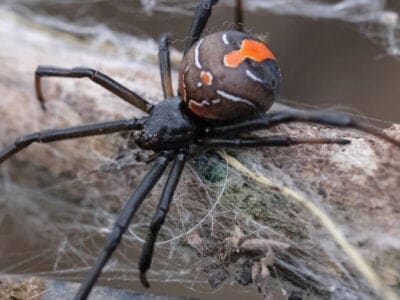
Redback Spider
The redback spiders found in New Caledonia differ from other populations in that they don’t practice sexual cannibalism and don’t bite people as much.
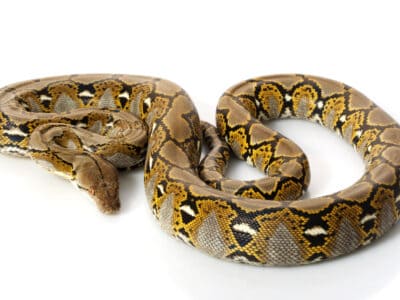
Reticulated python
These popular pets can get big enough to kill their owner.

Rhinoceros
It's horns are made from keratin!

River Turtle
Inhabits freshwater habitats around the world!

Robin
There are more than 45 species in Australia alone!

Rodents
The capybara, the world’s largest rodent, likes to be in and around bodies of water. Because of this, the Catholic Church in South America decided that it was a fish, and people were allowed to eat it during Lent and First Fridays.

Rooster
Will mate with the entire flock!

Sable Ferret
Ferrets were used during the Revolutionary War to keep down the rat population.

Salamander
There are more than 700 different species!
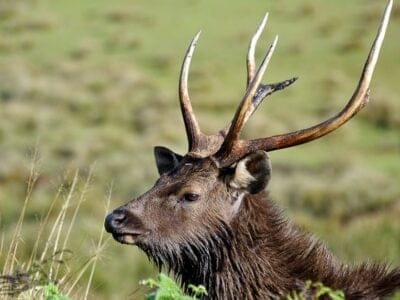
Sambar
Male sambars will compete for mates by clashing together with their antlers

Sand Crab
The sand crab burrows beneath the sand with its tail

Scorpion
There are around 2,000 known species!

Sea Eagle
The sea eagle tends to mate for life with a single partner

Seahorse
Males give birth to up to 1,000 offspring!

Sheep
Around 35 million in the English countryside!

Shrew
The spinal column of the shrew Scutisorex somereni is so strong and reinforced that it can support the weight of an adult human.

Shrimp
There are 2,000 different species worldwide!

Slow Worm
Found widely throughout British gardens!

Smokybrown Cockroach
Has up to 45 eggs per egg case

Snail
There are nearly 1,000 different species!

Snake
There are around 4,000 known species worldwide

Sparrow
There are 140 different species!

Spotted Garden Eel
Males battle each other over females and territory

Squirrel
Small rodents found in woodlands worldwide!

Stick Insect
There are more than 3,000 different species!

Stoat
Average adults weigh about 200 grams!

Stork
They can’t sing like other birds.

Sunbeam Snake
Sunbeam snakes have two lungs instead of just a single lung like most snake species.

Swan
Populations have been affected by pollution!

Tarantula Hawk
Tarantula hawks are excellent pollinators, especially for milkweed.
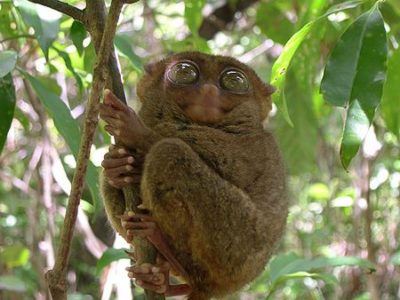
Tarsier
Each eye weighs more than their whole brain!

Termite
Their mounds can be up to 9 meters tall!

Tick
They inject hosts with a chemical that stops them from feeling the pain of the bite
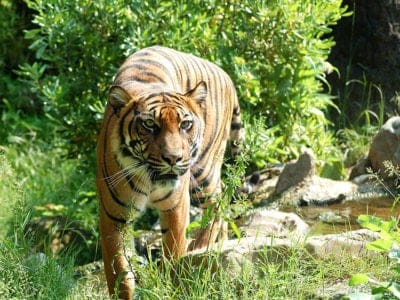
Tiger
The largest feline in the world!

Tiger Beetle
The adult tiger beetle is one of the fastest land insects in the world
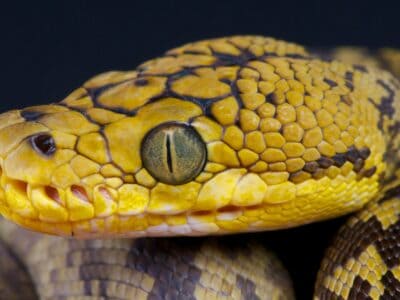
Timor python
Ironically, Timor pythons have never been found on the island of Timor.

Tortoise
Can live until they are more than 150 years old!

Tree Frog
Found in warmer jungles and forests!

Turtles
Some species of aquatic turtles can get up to 70 percent of their oxygen through their butt.

Vinegaroon
Vinegaroons can spray 19 times before the glands are depleted

Viper
Vipers are one of the most widespread groups of snakes and inhabit most

Vulture
There are 30 different species worldwide!

Wasp
There are around 75,000 recognised species!

Water Buffalo
Has been domesticated for thousands of years!
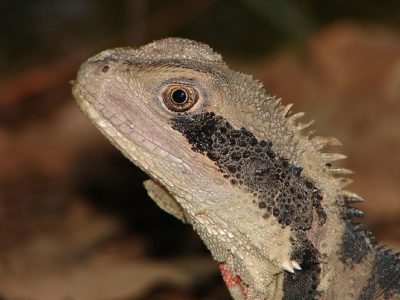
Water Dragon
Spends most of it's time in the trees!

Weasel
The smallest carnivorous mammal in the world!

White Ferret / Albino Ferrets
There are two different types of white ferrets!

White Tiger
None have been seen in the wild for 50 years!
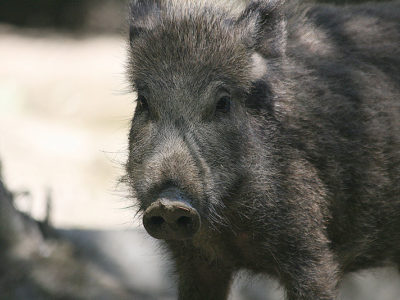
Wild Boar
Males have a top tusk to sharpen the bottom one!

Wolf
Thought to date back more than 300,000 years!

Wolf Spider
Carnivorous arachnid that hunts its prey.

Woodlouse
This animal can roll up into a ball

Woodpecker
There are 200 different species!

Worm
Doesn’t have eyes.
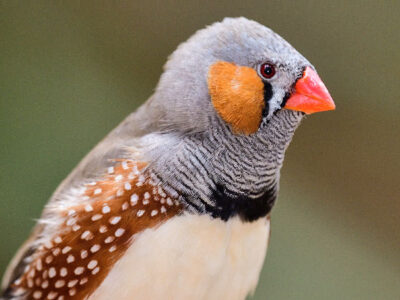
Zebra Finch
The male zebra finch creates a unique song by drawing inspiration from its parent or tutor
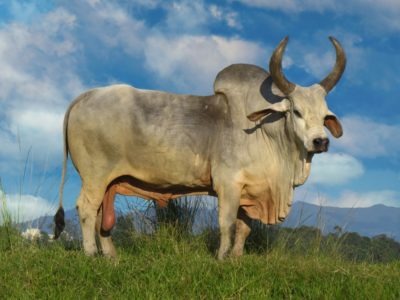
Zebu
There are around 75 different species!
Timorese Animals List
- Admiral Butterfly
- Ant
- Antelope
- Armyworm
- Aurochs
- Banana Spider
- Barb
- Barn Owl
- Bat
- Bear
- Bed Bugs
- Bee
- Beetle
- Bird
- Biscuit Beetle
- Black Widow Spider
- Brazilian Treehopper
- Brown Dog Tick
- Bumblebee
- Butterfly
- Camel Cricket
- Cat
- Caterpillar
- Catfish
- Centipede
- Chicken
- Cockroach
- Comb-crested Jacana
- Common Buzzard
- Common Furniture Beetle
- Common House Spider
- Common Spotted Cuscus
- Cormorant
- Cow
- Cow Reticulated Python
- Crab
- Crab Spider
- Crane
- Cricket
- Crocodile
- Crocodylomorph
- Cuckoo
- Deer
- Dog
- Dog Tick
- Donkey
- Dormouse
- Dragonfly
- Duck
- Dung Beetle
- Eagle
- Earthworm
- Earwig
- Eel
- Elephant
- Falcon
- False Widow Spider
- Fiddler Crab
- Fire-Bellied Toad
- Firefly
- Flea
- Fly
- Flying Squirrel
- Fox
- Frog
- Fruit Fly
- Gazelle
- Gecko
- Gerbil
- Giant Trevally
- Glass Lizard
- Glowworm
- Gnat
- Goat
- Golden Oriole
- Goose
- Grasshopper
- Green Bee-Eater
- Green Tree Python
- Hamster
- Hare
- Hawk Moth Caterpillar
- Hedgehog
- Heron
- Honey Bee
- Hoopoe
- Horse
- Horsefly
- Housefly
- Human
- Ibis
- Insects
- Jerboa
- Jumping Spider
- King Quail
- Kingfisher
- Ladybug
- Leech
- Leopard Cat
- Liger
- Lizard
- Locust
- Long-Eared Owl
- Long-Tailed Tit
- Lorikeet
- Magpie
- Masked Palm Civet
- Mayfly
- Mealybug
- Millipede
- Mole
- Monarch Butterfly
- Mongoose
- Mongrel
- Monitor Lizard
- Monkey
- Moorhen
- Mosquito
- Moth
- Mourning Gecko
- Mouse
- Mule
- Neanderthal
- Nematode
- Neptune Grouper
- Newt
- Nightingale
- Orb Weaver
- Osprey
- Otter
- Owl
- Ox
- Parrot
- Pheasant
- Pig
- Pika
- Pompano Fish
- Pond Skater
- Porcupine
- Praying Mantis
- Quail
- Rabbit
- Rat
- Rat Snakes
- Redback Spider
- Reticulated python
- Rhinoceros
- River Turtle
- Robin
- Rodents
- Rooster
- Sable Ferret
- Salamander
- Sambar
- Sand Crab
- Scorpion
- Sea Eagle
- Seahorse
- Sheep
- Shrew
- Shrimp
- Slow Worm
- Smokybrown Cockroach
- Snail
- Snake
- Sparrow
- Spotted Garden Eel
- Squirrel
- Stick Insect
- Stoat
- Stork
- Sunbeam Snake
- Swallowtail Butterfly
- Swan
- Tarantula Hawk
- Tarsier
- Termite
- Tick
- Tiger
- Tiger Beetle
- Timor python
- Tortoise
- Tree Frog
- Turtles
- Vinegaroon
- Viper
- Vulture
- Wasp
- Water Buffalo
- Water Dragon
- Weasel
- White Ferret / Albino Ferrets
- White Tiger
- Wild Boar
- Wolf
- Wolf Spider
- Woodlouse
- Woodpecker
- Worm
- Zebra Finch
- Zebu
Animals in Timor-Leste FAQs (Frequently Asked Questions)
What animals live in East Timor?
Timor-Leste is a unique place where rural Asiatic species such as the Water Buffalo, Deer, and Rat live next to wild species such as the Crocodile, Bat, and Monkey, and domestically raised livestock such as Cattle, Sheep, Goats, Pigs, and Ducks.
Offshore, the area is an absolute paradise for aquatic species such as an extensive variety of Sea Turtles, Dolphins, Whales, and much other maritime life that is found among the island’s world-renowned coral reefs.
The great crocodiles hold court along the coastline and the area is filled with amphibian species such as frogs. In particular, the region is relatively unexplored so new species are being discovered all the time.
As are most tropical places, Timor-Leste is a colorful paradise filled with hundreds of unique birds with a colorful plumage and exotic bird calls.
Are there monkeys in Timor-Leste?
Yes, there are monkeys in Timor-Leste. The Crab-eating Macaque is present in the country.
Are there crocodiles in Timor-Leste?
Since it is the national animal of Timor-Leste, the answer is obviously yes. Large Saltwater Crocodiles call the region home.






